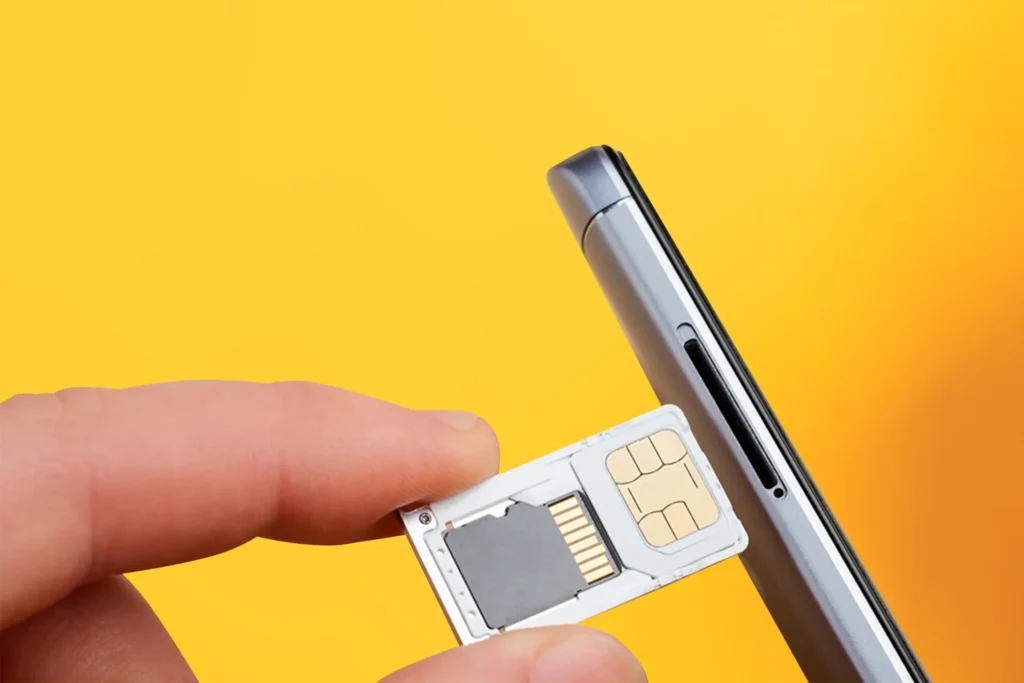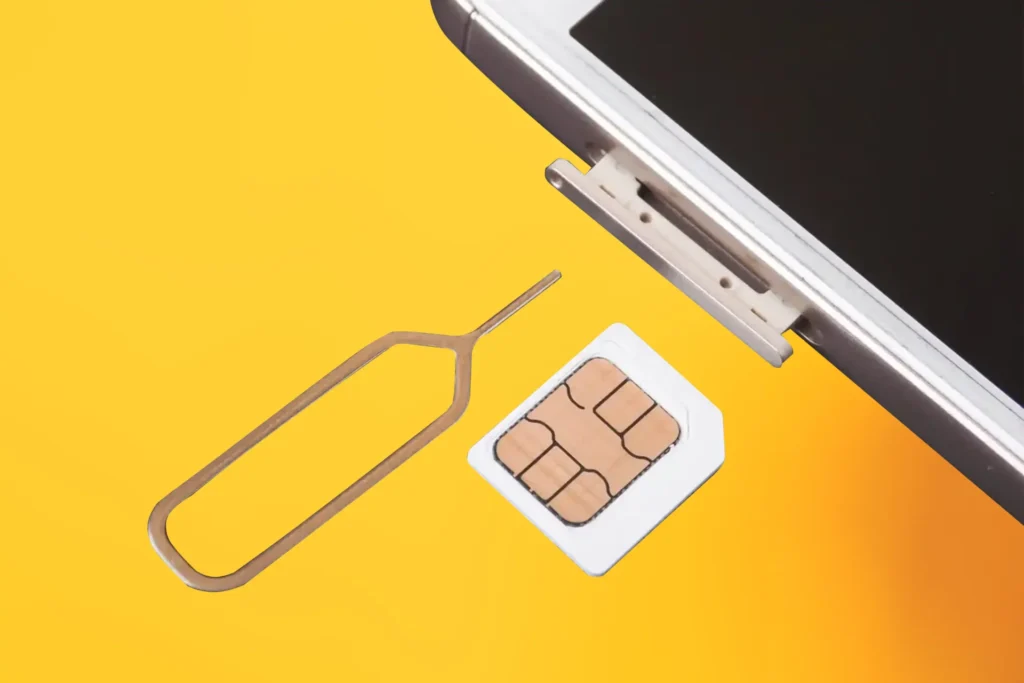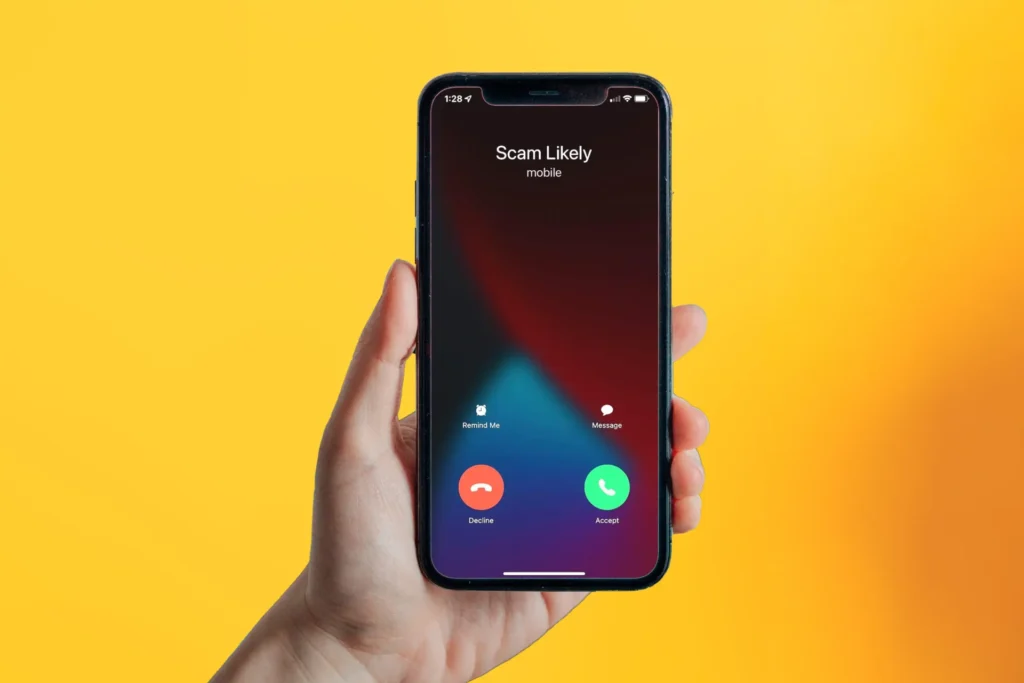2023
Protecting Yourself from SIM-Swap Attacks
Tips
SIM-Swap Attacks? Imagine receiving a barrage of debit alerts on your phone during dinner, helplessly watching your account balance drain away. You try calling for assistance, but the line is dead. Texting is futile too. You’ve fallen victim to a SIM-swap attack, leaving you trapped and powerless. In this article, we’ll delve into what SIM swapping is, how it works, and most importantly, how you can safeguard yourself from such attacks.
What is SIM swapping, and how does it work?
SIM swapping, also known as SIM jacking, is a fraudulent method employed to gain access to someone’s mobile number. This scheme involves convincing your cellular service provider to transfer your phone number to a different SIM card, typically one in the possession of the criminal. Once successful, the attacker gains control over your calls, texts, and internet access, while your original SIM becomes inactive.

Armed with the gathered information, cybercriminals call your carrier and present details that only you should know, convincing the service provider that they are you. They claim to have misplaced their original SIM card and request a transfer of your number to the SIM in their possession.
Once the swap is complete, your line is disconnected, rendering you unable to make calls, send texts, or access the internet. Reclaiming your number requires an in-person visit to the carrier to prove your account ownership. By that point, it’s highly likely that your applications and profiles have already been compromised.
What’s being done to combat SIM swap attacks?
Government entities and carriers are actively working to combat SIM swapping. The FCC, for instance, announced plans in October 2021 to draft rules addressing SIM swapping and port-out fraud. Meanwhile, some carriers, like T-Mobile, have implemented internal protocols to enhance security. For instance, changing a SIM card now requires SMS verification or approval from two carrier employees, instead of a single manager. While not foolproof, these efforts are steps in the right direction.

What are the signs of SIM swap fraud?
When it comes to SIM swap attacks, the earlier you reverse the changes made to your accounts, the better. Look out for the following warning signs, and if you notice any, contact your cellular provider immediately, as you might be under attack:
- Strange calls or texts regarding unexpected changes to your service
- Being locked out of your phone’s online accounts, such as banking or social media apps
- Loss of phone service or an inability to receive calls or texts, even with good reception
- Receiving phone service notifications for actions you did not initiate
How to prevent SIM swapping

Prevention is key to avoiding the catastrophic consequences of a SIM swap. Take these steps to enhance your security:
- Protect your phone and SIM: Enable security features like PINs, passwords, fingerprint scanners, or facial recognition on your device. Lock your physical SIM with a unique PIN to be entered on device restart.
- Lock your phone number with your service provider: Check if your network provider offers Port Freeze or Number Lock features. Activate them to prevent unauthorized transfers of your mobile number.
- Use strong passwords and security questions: Utilize strong, unique passwords for all your accounts, incorporating a mix of characters. Consider using password managers to securely store your credentials. When security questions are required, choose ones that are challenging for acquaintances to guess.
- Turn on two-factor identification: Enable two-factor authentication (2FA) on platforms that support it, such as Google. Opt for authentication apps instead of SMS-based codes for added security.
- Enable biometric authentication on your device: Utilize face or touch IDs whenever possible, as they require your physical presence to unlock your device.
- Limit personal information shared online: Be cautious about disclosing personal details on public platforms. Avoid sharing your full name, address, phone number, or date of birth. Minimize oversharing personal aspects of your life, such as pet names or favorite foods, as they may be used in security questions.
- Be wary of phishing attempts: Exercise caution when encountering suspicious emails, texts, or calls. Verify the authenticity of requests for personal information from organizations by contacting them directly. Reputable institutions will never ask for sensitive information online.
Conclusion
By implementing these preventive measures, you can significantly reduce the likelihood of falling victim to a SIM swap attack. Remember to enable 2FA on all your accounts, use biometric locks when available, and periodically check for any password leaks in your accounts. Stay vigilant and prioritize your online security.
All products, and company names, logos, and service marks (collectively the "Trademarks") displayed are registered® and/or unregistered trademarks™ of their respective owners. The authors of this web site are not sponsored by or affiliated with any of the third-party trade mark or third-party registered trade mark owners, and make no representations about them, their owners, their products or services.

Comments are closed.